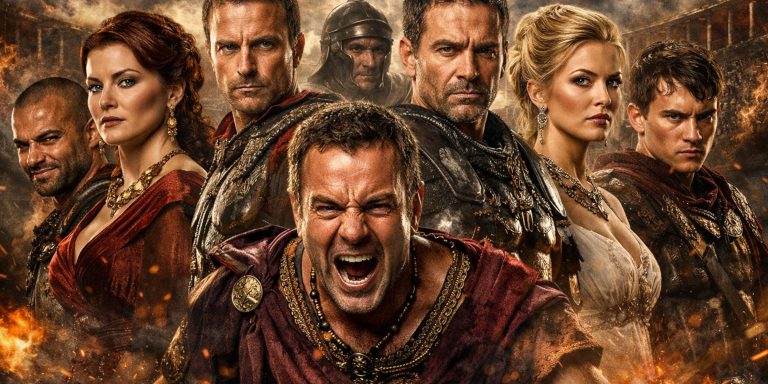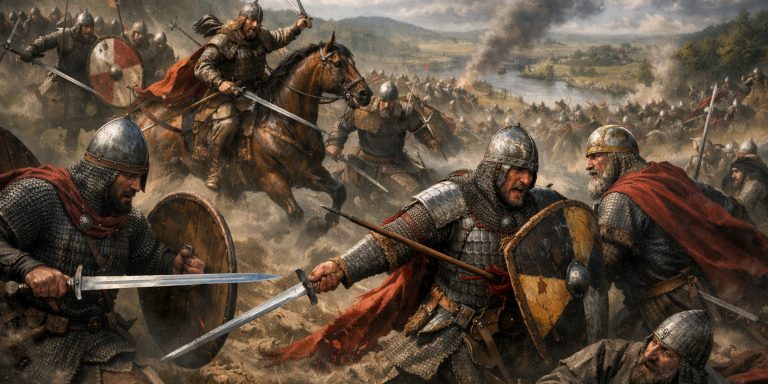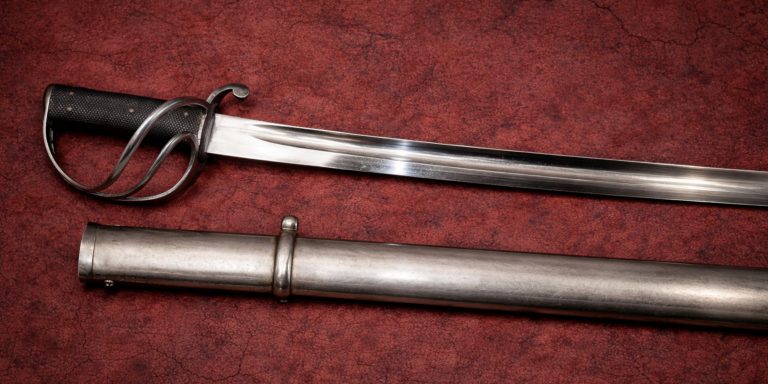
Cadwallon ap Cadfan is one of those early medieval rulers who stride into history trailing equal parts shadow and fire. King of Gwynedd in the early 7th century, he emerges from the mists of post-Roman Britain as both a patriot and a scourge. To some, he was the last great hope of the Britons, striking back at the encroaching Anglo-Saxons. To others, especially those writing from the English side of history, he was little more than a ruthless invader who brought chaos and bloodshed. As always with this period, truth sits somewhere between poetry and propaganda.
Cadwallon’s life reads like a campaign of vengeance. Born around 624, the son of Cadfan ap Iago, he ruled a Wales not yet tamed by borders or peace. His greatest moment came when he challenged Northumbria, shattered Edwin’s power, and briefly made Gwynedd the most feared kingdom in Britain.
Arms and Armour
Trying to reconstruct what Cadwallon’s warriors looked like is an exercise in informed imagination. Archaeology and fragmentary texts suggest the Britons of Gwynedd fought in a style that blended lingering Roman influence with Celtic ferocity.
Typical arms and armour of a 7th-century Gwynedd warband:
| Weapon/Armour | Description | Notes |
|---|---|---|
| Sword (spatha type) | Long, straight, double-edged sword. Iron blade around 70–80 cm. | Likely influenced by lingering Roman and continental designs. |
| Spear (gae) | Primary weapon of both mounted and foot soldiers. | Cheap, versatile, and deadly at close quarters. |
| Shield | Round wooden shield, often bossed in iron. | Painted with tribal or royal insignia, perhaps featuring animal motifs. |
| Helmet | Rare, often simple iron conical or nasal helmets. | The rich may have had decorated versions akin to Sutton Hoo types. |
| Mail shirt (byrnie) | Worn by nobles or professional retainers. | Imported or inherited from older Roman stocks, rarely made locally. |
| Dagger (sgian) | Everyday sidearm. | Used for both practical and ritual purposes. |
The Welsh of Cadwallon’s time valued agility and morale over heavy armour. Warriors prized speed, their warbands relying on ambush, knowledge of the terrain, and devastating charges. Cadwallon himself, as a king of Gwynedd, would have worn fine mail and carried a richly ornamented sword, perhaps a family heirloom.
Battles and Military Acumen
Cadwallon’s military career was defined by his wars against Northumbria. In this era, kingdoms rose and fell by the strength of a king’s charisma and his skill in battle.
The War with Edwin of Northumbria
After a period of exile and humiliation, Cadwallon struck back at Edwin, King of Northumbria, whose power stretched deep into Wales. With the support of Penda of Mercia, he launched a campaign that would culminate in the Battle of Hatfield Chase (632 or 633).
- Forces: Cadwallon’s Welsh troops and Penda’s Mercians against Edwin’s larger, better-armed army.
- Tactics: Cadwallon’s strategy hinged on surprise and fury, drawing Edwin into marshland and fragmented terrain where the Welsh could fight hand-to-hand rather than face Saxon ranks head-on.
- Outcome: Edwin was killed, his line shattered, and Northumbria plunged into disarray.
For a brief, astonishing moment, Cadwallon controlled almost all of Britain south of Hadrian’s Wall. Chroniclers describe him sweeping through Northumbria like a storm, burning towns and slaying nobles. To later English writers, he became a figure of terror; to the Welsh, he was vengeance made flesh.
The Fall: Battle of Heavenfield (634)
Cadwallon’s supremacy ended abruptly when Oswald, a young Northumbrian prince raised among the Scots, returned to reclaim his kingdom. At Heavenfield, near Hexham, the two armies met. Oswald’s men, inspired by their leader’s faith and a makeshift wooden cross, defeated Cadwallon’s forces. The king was slain, reportedly while retreating.
It was a cruel twist: the conqueror of Northumbria felled by a saint. Yet even in defeat, Cadwallon’s campaigns altered the map of Britain, proving that Welsh power could still shake the Saxon world.
Legacy and Historical Significance
Cadwallon ap Cadfan occupies an awkward place in history. The Anglo-Saxon Chronicle calls him a “barbarous tyrant.” The Welsh chronicles, by contrast, portray him as a liberator and unifier. He was arguably the last Brittonic king to seriously threaten the ascendancy of the Anglo-Saxons.
His death marked more than a battlefield loss. It ended a realistic hope of reversing Saxon expansion. Yet the echoes of his defiance lived on in Welsh poetry and legend. Later rulers, including Cadwaladr ap Cadwallon and even the Tudors, drew symbolic lineage from his name.
Artefacts and Archaeology
Material traces of Cadwallon’s reign are elusive, as expected for this turbulent age. Still, several sites and artefacts connect to his story:
- Bangor and Caernarfon: Centres of Gwynedd’s royal and ecclesiastical life, where artefacts from Cadwallon’s era have been uncovered, including fragments of weaponry and early Christian crosses.
- Aberffraw on Anglesey: Traditional royal seat of Gwynedd, associated with Cadwallon’s lineage. Excavations here reveal high-status buildings from the 6th–7th centuries, suggesting continuity of royal presence.
- Hatfield Chase (Doncaster): Occasional finds of weapon fragments and cremation remains hint at the battle’s location. Modern surveys use ground-penetrating radar to identify potential campsites and burned areas.
- Heavenfield (Northumberland): The supposed site of his final battle, marked by a stone cross. No definitive artefacts tie directly to Cadwallon, but the area is rich in early medieval finds, including weapon fittings and horse gear.
Ongoing research at Aberffraw and in Anglesey’s ecclesiastical sites continues to refine our picture of early Gwynedd’s political landscape, revealing trade links across the Irish Sea and beyond.
Personal Reflection
As a historian, I find Cadwallon fascinating precisely because he resists tidy categorisation. He is both hero and villain depending on who holds the quill. The brutality attributed to him may well have been exaggerated by later Northumbrian monks, yet his campaigns clearly terrified a region accustomed to dominance.
What captivates me most is how his story exposes the fault lines of identity in post-Roman Britain. Cadwallon was not fighting an abstract enemy but a cultural eclipse, a struggle to preserve the Brittonic world against the rise of a new Anglo-Saxon order. His defeat symbolises the fading of one Britain and the birth of another.
Cadwallon ap Cadfan may have fallen at Heavenfield, but in historical memory, he stands tall, a warrior-king whose shadow still crosses the hills of Wales.
Watch the documentary:



